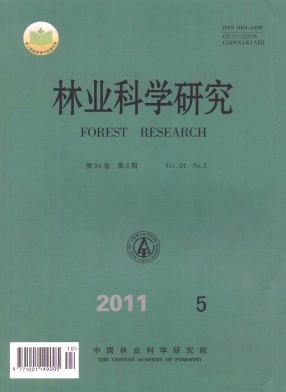|
[1]
|
Grinnell J.The Niche Relationship of California Thrasher[J].Auk,1917,34:427- 433 |
|
[2]
|
Whitaker R H,Levin S A .Niche:theory and application[M].Stroudsburg:Dowden Hutchinson and Ross,Inc.1975 |
|
[3]
|
Elton C.Animal Ecology [M].London:Metheun.1927:63-68 |
|
[4]
|
Krebs C J.Ecology:The experimental analysis of distribution and abundance [M].New York:Fairfield Graphics,1978:225- 228 |
|
[5]
|
Sylvain D,Daniel C,Clementine G C.Niche separation in community analysis:A new method [J].Ecology, 2000,81 (10): 2914-2927 |
|
[6]
|
Jorge S A,Townsend P.Interpretation of models of fundamental ecological niches and species'distributional areas[J].Biodiversity Informatics,2005,2:1-10 |
|
[7]
|
Feinsinger P,Spears E E,Poole R W.A simple measure of niche breadth[J].Ecology,1981,62:27-32 |
|
[8]
|
Thomas M G,Robert K S.Body size,niche breadth,ecologically scaled responses to habitat fragmentation:mammalian predators in an agricultural landscape[J].Biological Conservation,2003,109:283-295 |
|
[9]
|
Abrams P A.Alternative models of character displacement and niche shift I.Adaptive shifts in resource use when there is competition for nutritionally non substitutable resources [J].Evolution,1987,41:651-661 |
|
[10]
|
Holt R D.On the relation between niche overlap and competition:the effect of incommensurable niche dimensions [J].Oikos,1987,48:110-114 |
|
[11]
|
Tilman D.Cause consequences and ethics of biodiversity [J].Nature,2000,405:208-211 |
|
[12]
|
Rosenthal G. Selecting target species to evaluate the success of wet grassland restoration [J].Agriculture Ecosystem & Environment,2003,98(3):227-246 |
|
[13]
|
刘金福,洪 伟.格氏栲群落生态学研究-格氏栲林主要种群生态位的研究[J].生态学报,1999,19(3):347-352
|
|
[14]
|
余树全,李翠环.千岛湖水源涵养林优势树种生态位研究[J].北京林业大学学报,2003, 25(2):18-23
|
|
[15]
|
武纪成.落叶松冷杉林结构特征及调整研究 ,北京:中国林业科学研究院,2008
|
|
[16]
|
李 峰,周广胜,曹铭昌,等.兴安落叶松地理分布对气候变化响应的模拟应用[J].生态学报,2006,17(12):2255-2260
|
|
[17]
|
Fabio A,Martins M C,Cerverira C, et al. Influence of soil and organic residue management on biomass and biodiversity of understory vegetation in a Eucalyptus globules Labill Plantation[J].Forest Ecology and Management,2002,171:87-100 |
|
[18]
|
Kume A,Satomura T,Tsuboi N,et al. Effects of understory vegetation on the ecophysiological characteristics of an overstory pine,Pinus densiflora[J].Forest Ecology and Management,2003,176:195-203 |
|
[19]
|
Taylor A H,Huang J Y,Zhou S Q.Canopy tree development and undergrowth bamboo dynamics in old-growth Abies Betula forests in southwestern China:A 12-year study[J].Forest Ecology and Management,2004,200:347-360 |
|
[20]
|
Taylor A H, Jang S W, Zhao L J, et al.Regeneration patterns and tree species coexistence in old-growth Abies picea forests in southwestern China [J].Forest Ecology and Management,2006, 223:303-317 |
|
[21]
|
王树森,余新晓,刘凤芹,等.华北土石山区天然森林植被种间联结和生态位的研究[J].水土保持研究,2006,13(4):170-173
|
|
[22]
|
冶民生,关文彬,吴 斌,等.岷江干旱河谷主要灌木种群生态位研究[J].北京林业大学学报,2006,28(1):7-13
|
|
[23]
|
马晓勇,上官铁梁,庞军柱. 太岳山森林群落优势种群生态位研究[J].山西大学学报:自然科学版, 2004,27(2):209-212
|
|
[24]
|
魏文超, 何友均, 邹大林, 等. 澜沧江上游森林珍稀草本植物生态位研究[J].北京林业大学学报, 2004, 26(3):7-12
|
|
[25]
|
石 娟,骆有庆,曾凡勇,等.松材线虫入侵对于马尾松主要种群生态位的影响[J].北京林业大学学报,2005,27(6):76-82
|
|
[26]
|
刘加珍,陈亚宁,张元明. 塔里木河中游植物种群在四种环境梯度上的生态位特征[J].应用生态学报, 2004,15(4):549-555
|
|
[27]
|
张金屯.植被数量生态学方法[M].北京:中国科学技术出版社,1995
|
|
[28]
|
王 刚.关于生态位定义的探讨及生态位重叠计测公式改进的研究[J].生态学报,1984,4(2):119-127
|
|
[29]
|
张德魁,王继和,马全林.古浪县北部荒漠植被主要植物种的生态位特征[J].生态学杂志,2007,26(4):471- 475
|
|
[30]
|
胡相明,程积民,万惠娥.黄土丘陵区不同立地条件下植物种群生态位研究[J].草业学报,2006,15(1):29-35
|
|
[31]
|
林伟强,贾小容,陈北光.广州帽峰山次生林主要种群生态位宽度与重叠研究[J].华南农业大学学报,2006,27(1):84-87
|
|
[32]
|
刘加珍,陈亚宁,张元明.塔里木河中游植物种群在四种环境梯度上的生态位特征[J].应用生态学报,2004,15(4):549-555
|
|
[33]
|
Begon M,Harper J L,Townsend C R.Ecology:Individuals, Populations and Communities [M].London:Blackwell Science,1986:54-87 |
|
[34]
|
Tilman D.Resource Competition and Community Structure [M].Princeton:Princeton University Press,1982:88-91 |
|
[35]
|
Walker B.Conserving biological diversity through ecosystem resilience [J].Conservation of Biology,1995 (9):747-752 |
|
[36]
|
杨利民,周广胜,王国宏.草地群落物种多样性维持机制的研究Ⅱ物种实现生态位[J].植物生态学报,2001,25(5):634-638
|
|
[37]
|
姚小贞,丁炳扬,金孝锋,等.凤阳山红豆杉群落乔木层主要种群生态位研究[J].浙江大学学报:农业与生命科学版,2006,32(5):569-575
|
|
[38]
|
张继义,赵哈林,张铜会,等.科尔沁沙地植物群落恢复演替系列种群生态位动态特征[J].生态学报,2003, 23(12):2741-2746
|
|
[39]
|
赵鹏武,海 龙,宋彩玲,等.大兴安岭北部兴安落叶松原始林倒木研究[J].干旱区资源与环境,2010,24(3):173-177
|
|
[40]
|
丛沛桐,颜延芬,周福军,等.东北羊草群落种群生态位重叠关系研究[J].植物研究,1999,19(2):212-219
|
|
[41]
|
李意德.海南岛尖峰岭热带山地雨林主要种群生态位特征研究[J].林业科学研究,1994,7(1):78-85
|





 DownLoad:
DownLoad: